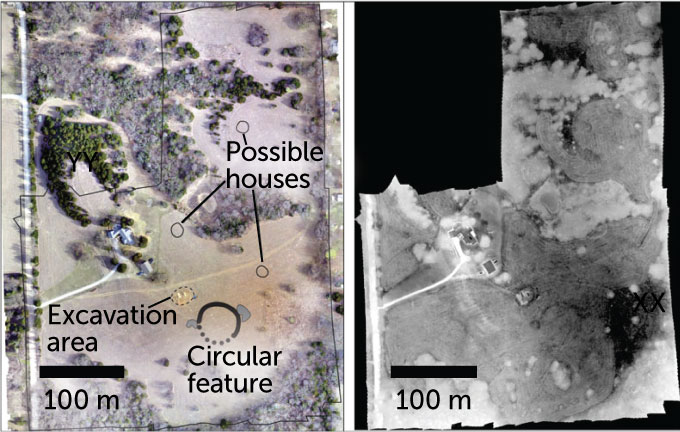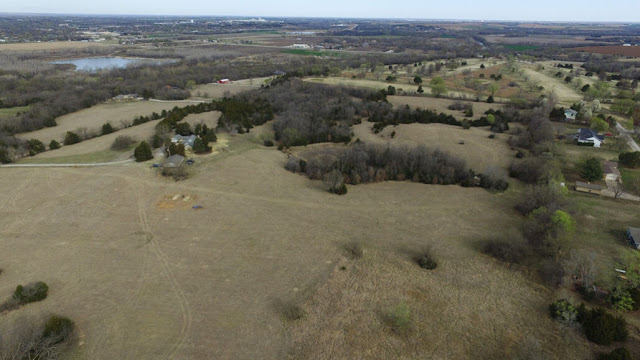https://www.sciencenews.org/article/drones-native-american-settlement-etzanoa-kansas-pasture
Remote-sensing devices mounted on drones identified a large earthwork beneath the surface of this cattle pasture in Kansas. Researchers suspect the site was once part of one of the largest Native American settlements north of Mexico.
J. CASANA
The sprawling town may have been home to thousands before Spanish explorers arrived
Specially equipped drones flying over a Kansas cattle ranch have detected the buried remnants of a horseshoe-shaped ditch made more than 400 years ago by ancestors of today’s Wichita and Affiliated Tribes, scientists say.
The find adds to suspicions that the Kansas site was part of a sprawling population center that Spanish explorers dubbed the Great Settlement in 1601, archaeologist Jesse Casana of Dartmouth College and his colleagues report August 24 in American Antiquity.
Called Etzanoa by a captive the Spanish took from the Great Settlement, it could turn out to be one of the largest Native American settlements ever established north of Mexico, if confirmed by further research. The largest currently known is Cahokia, a site in what’s now Illinois where as many as 20,000 people lived between 1050 and 1150.
Ancestral Wichita communities in Kansas and northern Oklahoma that date to between around 1425 and 1650 existed in a time frame during which South America’s Inca civilization rose and fell (SN: 8/3/20). In the 1800s, European settlers drove ancestral Wichita people from their native lands, leading to the destruction of their villages and communal traditions.
The newly discovered earthwork, a 2-meter-wide ditch that forms a semicircle about 50 meters across, is similar to other circular earthworks known as council circles. Five council circles have been found among 22 ancestral Wichita sites excavated along an eight-kilometer stretch of the Little Arkansas and Smoky Hill rivers, around 230 kilometers north of the newly surveyed site.
“We apparently have located the sixth council circle and the only one that has not been disturbed,” says anthropological archaeologist Donald Blakeslee of Wichita State University. Farming and construction projects have damaged or covered many ancestral Wichita sites.
Drone surveys “can truly transform our ability to locate sites and map important features where huge areas have been plowed and surface traces of houses and ditches are often close to invisible,” says archaeologist Douglas Bamforth of the University of Colorado Boulder, who did not participate in the new study.
 Images from a drone survey that probed underneath a Kansas pasture (right) helped scientists identify a large, circular ditch bordered by two pits (shown in gray, left) and areas where houses may have been built. A previously excavated area lies near the location of the underground earthwork.
Images from a drone survey that probed underneath a Kansas pasture (right) helped scientists identify a large, circular ditch bordered by two pits (shown in gray, left) and areas where houses may have been built. A previously excavated area lies near the location of the underground earthwork.J. CASANA ET AL/AMER. ANTIQUITY 2020
It’s unclear how ancestral Wichita people used council circles. Researchers have suggested that these structures were places for ritual ceremonies, houses of social elites or protection from attackers.
article continues at: https://www.sciencenews.org/article/drones-native-american-settlement-etzanoa-kansas-pasture
Recommend this post and follow The birth of
modern Man
https://disqus.com/home/forum/lifeofearth/


No comments:
Post a Comment
Stick to the subject, NO religion, or Party politics